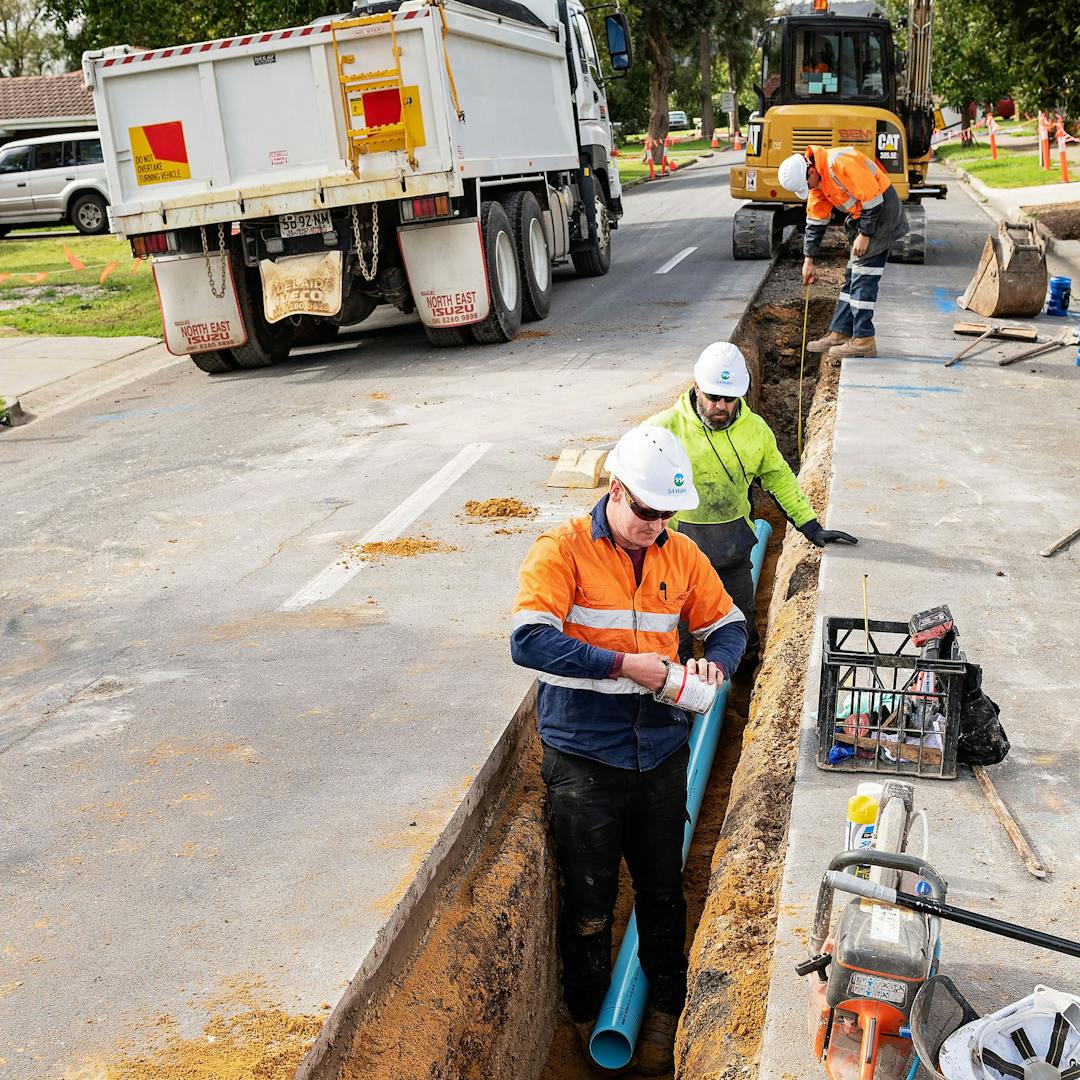Replacing and upgrading your water mains

Our annual water main replacement program delivers proactive maintenance of Adelaide’s water distribution network. Regular annual and proactive reviews ensure their integrity and determine when they need to be renewed.
Pipes
We own, operate and maintain more than 27,000 kilometres of water mains across the state. Our water network consists of large trunk mains that transfer high volumes of water between our reservoirs, the River Murray, water treatment plants, the Adelaide Desalination Plant and more than 540 storage tanks. Smaller reticulation mains connect to the trunk mains and run along most suburban streets to provide water to your home.
Water mains are generally very reliable and have an asset life of approximately 100 years. Some mains may last longer and others may need to be replaced sooner, depending upon ground conditions and the type of material used.
View our extensive water main network on our interactive map(External link). You can zoom in or type in a street address, click on a main and find out more about when it was laid or when works are planned, as well as the life expectancy of the pipe.
Why main breaks happen
Water mains can break for a number of reasons, but the most common cause is ground movement. For example, during years of low rainfall, we have a higher rate of main breaks. Low rainfall causes soil shrinkage and hardening, making pipes more prone to failure.
Data reported by the Australian Bureau of Meteorology shows that Adelaide’s break rates are consistently lower than those in Brisbane, Sydney and Melbourne.
Discover more about our water mains replacement(External link).



 r water supply
r water supply 

